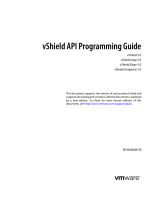
Back to Contents Page
Preparing Self-Extracting (SFX) Files for Software
Dispatch
Due to the fact that neither Microsoft
®
Systems Management Server (SMS) nor Microsoft
®
System Center Configuration
Manager (SCCM) can dispatch the XML configuration file, you must package the individual BTFremote.exe, XML Configuration
file, and XML Schema file into a compressed file using, for instance, WinRAR or WinZip software.
The example below lists the steps to create a self-extracting executable SFX file program (.exe) using WinRAR. NOTE: The
exact user interface of WinRAR may vary depending on your version of WinRAR.
1. In the File Explorer window, select each file to be included in the SFX archive for dispatching. For example, let's assume
you select files named BTFRemote.exe, ChangeAllUsersPassword.xml, and DVMRemoteCmd.xsd.
2. Right-click on the group of files. In the right-click pop-up menu, select the Add to archive... command.
3. A dialog box opens which (among many other options) lets you:
Assign a filename (by default, the parent folder name is used).
Select the RAR archive format.
Select the desired Archiving Options.
4. Click OK to create the .rar file.
5. Double-click on the newly-created .rar archive file.
6. Click the SFX icon in the Toolbar of the WinRAR window.
7. In the dialog box that opens, click the Advanced SFX options... button.
8. In the Advanced SFX Options dialog box, select the Create in the current folder button.
9. In the Setup program/Run after extraction field, enter the name of the .exe file (which, in this example, would be
BTFRemote.exe).
10. Click OK. You will then see that the .exe (self-extracting) file has been created. Use this file in the SMS or SCCM server
to dispatch the Latitude ON Flash configuration settings.
NOTE: It is important to remember that the SFX self-extracting .exe file must be set up as a silent installation. The
command to do this must be entered in the Command line field of the Program Properties dialog box. The first
part of the command consists of the .exe command name, and is followed by the options /s /v"qn. So, for example,
if the SFX file you created is named Dispatch.exe, then the command to push it for silent installation would be:
Dispatch.exe /s /v"qn
Back to Contents Page
20091002a












